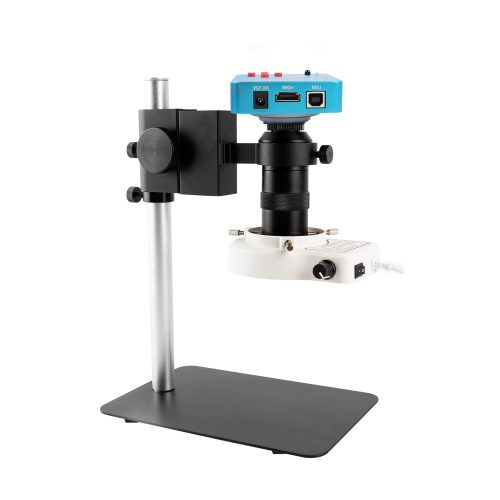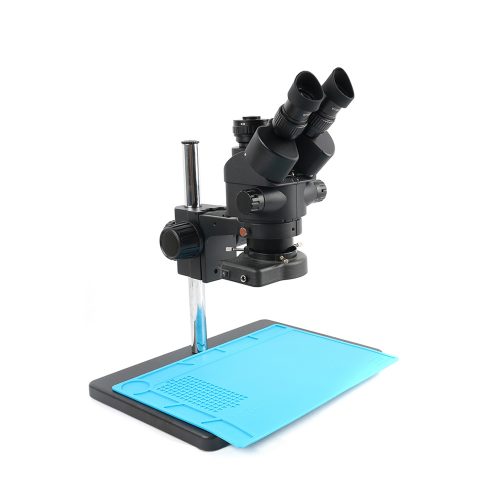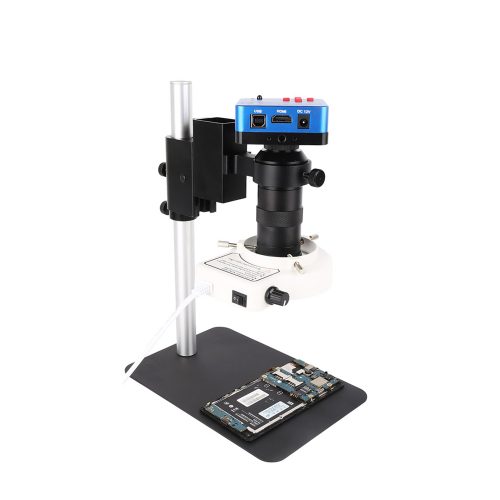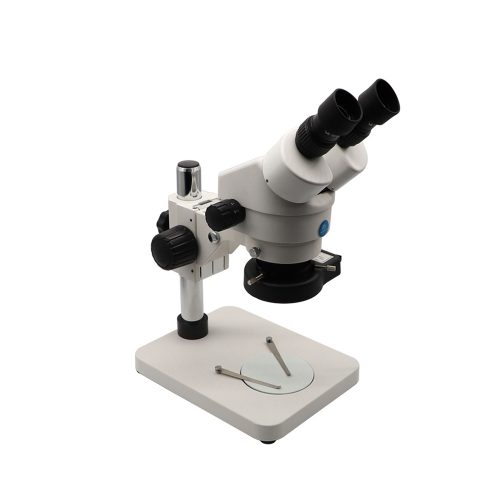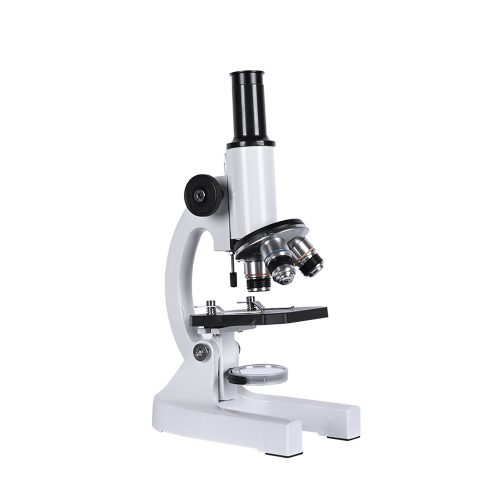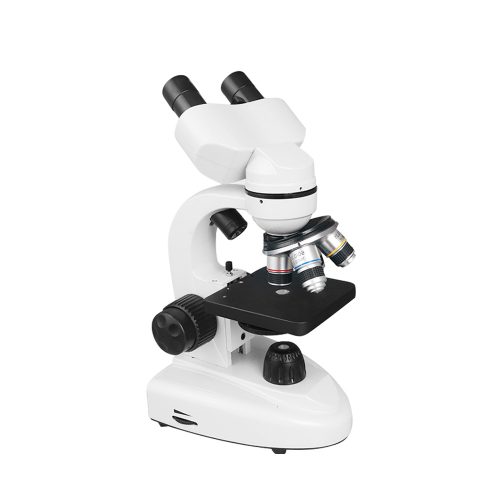BEST COMPOUND MICROSCOPE COLLECTION FOR YOU
- Compound microscope definition
The objective or objective lens sits on an objective turntable with a shorter focal length, close to the target specimen. It collects light and focuses the image of the object into the compound light microscopes. A second lens in the eyepiece has a longer focal length and further magnifies the image.
- Compound microscope types
Digital Microscope
The USB Computer Microscope
The Pocket Microscope
Electron Microscope(EM)
Scanning Probe Microscope (SPM)
Acoustic Microscope
Trinocular Compound Microscope
Binocular Microscope
Monocular Microscope
- Composite VS Stereoscopic
You need to buy a compound microscope to view prepared slides like pond organisms, pollen, skin cells, or bacteria.
- Student compound light microscopes VS laboratory compound light microscopes
Student Compound Microscopes:
As the name suggests, these compound microscopes are typically used for educational purposes and are primarily for K-12 settings. However, you can also consider these to be amateur-grade compound light microscopes. Student compound light microscopes are inexpensive compound microscopes, usually priced between $50-$400.
While they won't give you the same performance as laboratory compound light microscopes, they can meet almost any teaching or hobby-related need.
Laboratory microscopes:
While laboratory compound light microscopes are commonly used in the laboratory, you can also consider them professional-grade compound microscopes.
These compound microscopes offer upgraded performance but at a higher cost. Depending on the characteristics and quality of the components, laboratory compound light microscopes often range in price from $500 to several thousand dollars.
- Microscope Heads
This may seem like a daunting string of terms, but they refer to the number of eyepieces a compound microscope has. A monocular microscope has only one eyepiece. A binocular microscope has two eyepieces. And a trinocular microscope has three.
Monoculars are the cheapest of the three options and tend to be found on student compound light microscopes. As they use only one eyepiece, monocular microscopes give you a more limited field of view than binocular setups.
Binocular lenses are often found on laboratory-grade compound microscopes. They are more comfortable to use for long periods as they allow you to use both eyes equally, thus reducing eye strain. If you use this compound microscope every day, it is worth spending the extra money on a binocular microscope.
The final compound microscope arrangement is trinocular. It is most commonly used for compound light microscopes cameras.
- Magnification
When buying a compound microscope, you need to ensure that the compound microscope is at the level of magnification required.
- Illumination
LED or fluorescent illumination is standard on the cheapest compound microscopes, and we strongly recommend that you purchase a compound microscope with one of these two forms of illumination.
Compound microscopes are equipped with a built-in diaphragm that allows you to control the amount of light directed at the sample. Some oscilloscopes have disc diaphragms that operate as wheels with different sized apertures, which you can rotate to adjust the light. Much superior to the disc aperture is the iris aperture, which allows an unlimited number of illumination configurations.
Most oscilloscopes also have a spotting scope to control how the light hits the sample. If you intend to view at high magnification, you should look for a removable spotting scope allowing you to adjust the light most efficiently.
Having read this guide, we hope you now have an idea of the type of compound microscope you want to buy.
- The best brands
AmScope compound microscope
OMAX compound microscope
TELMU compound microscope
USCAMEL compound microscope
Vision Scientific compound microscope
- Focusing microscopes
Looking at the objective and stage from the side, move the stage up towards the objective by adjusting the coarse focus knob. Move it as far as possible without touching the slide.
Now look through the eyepiece and adjust the illuminator and aperture until a maximum, comfortable light level is achieved.
Slowly turn the coarse adjustment to move the carrier down (away from the slide). Continue until the image is in broad focus. Turn the fine adjustment knob as needed to obtain perfect focus.
Move the compound microscope slide until the image is in the center of the field of view. Then readjust the illuminator or aperture to obtain the sharpest image.
After obtaining a clear image, you should change to a higher magnification objective with minimal focusing. If you cannot focus on your sample, repeat the above steps and work from one objective to another until a higher magnification objective is in place.
- Care and maintenance of the compound microscope
Lower the carrier stage, snap the low magnification lens into place and remove the slide when you have finished viewing.
Turn the compound microscope off when, not in use.
Avoid touching the glass part of the lens with your fingers. Only use special lens paper to clean the lens.
Dust is the compound microscope's number one enemy, so always keep the compound microscope covered when not in use. If the compound microscope is not used for an extended period, place the compound microscope in its case.
A convex lens with a magnification of 5-10 times is the simplest microscope. Microscopes for laboratories, homes, and schools are called compound microscopes. They are with at least two lenses to produce a magnified image. There is a lens above the object (called the objective) and another lens near the eye (the eyepiece or ocular).
Each of these may consist of a series of different lenses. Most compound microscopes can magnify 10, 20, 40, or 100 times, but specialist compound microscopes can magnify 1000 times or more. For greater magnifications than this, scientists often use electron microscopes.
Structural components:
A compound microscope's three essential structural components are the head, the arm, and the base.
- Head
- Base
- Arm
Optical components:
The compound microscope has two optical systems: the eyepiece and the objective lens.
- Eyepiece
- Eyepiece tube
- Objective lens
- Nosepiece
- Coarse and fine adjustment knobs
- Stage
- Stage Clips
- Aperture
- Illuminator
- Condenser
- Iris diaphragm
- Spotter focus knob
For example, the total magnification of a 10x eyepiece and a 40x objective is 400x. The maximum total magnification of a compound light microscope is 1000x.
Dissecting microscopes, also known as stereoscopes, are used for items that cannot be reached by light. You can see the actual color of the specimen and work on the specimen at the same time. In addition, you can also use it to view some organisms.

